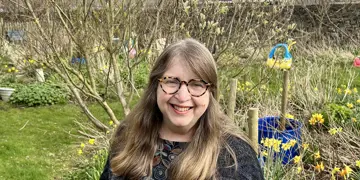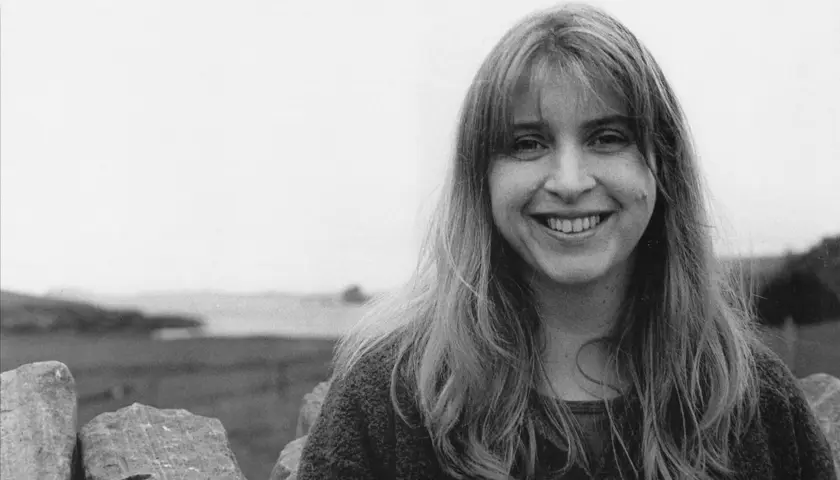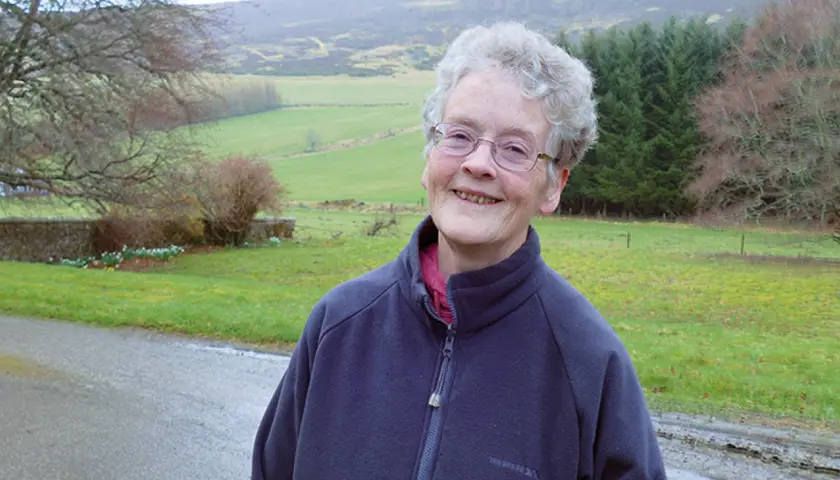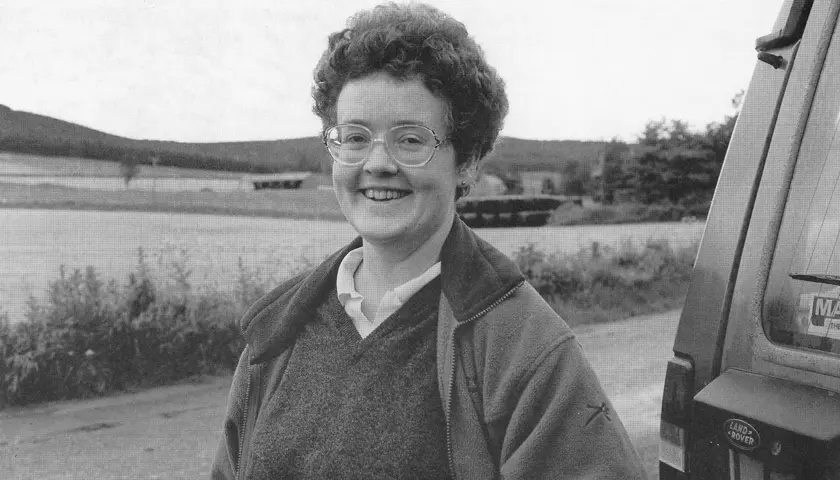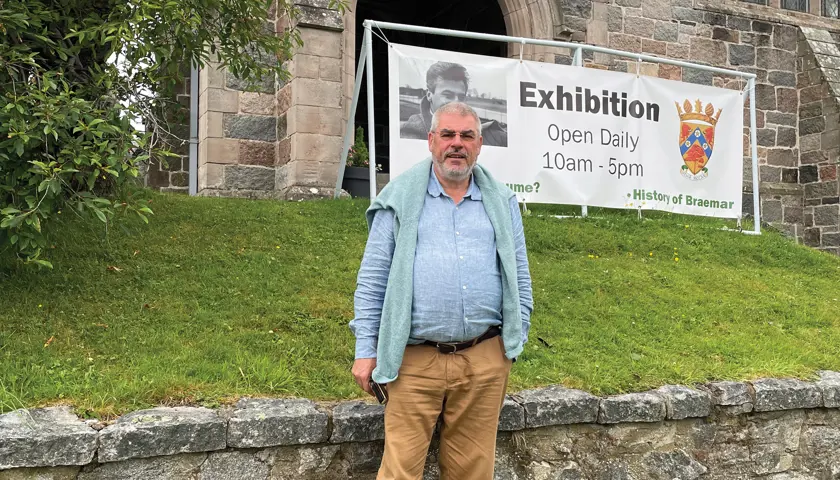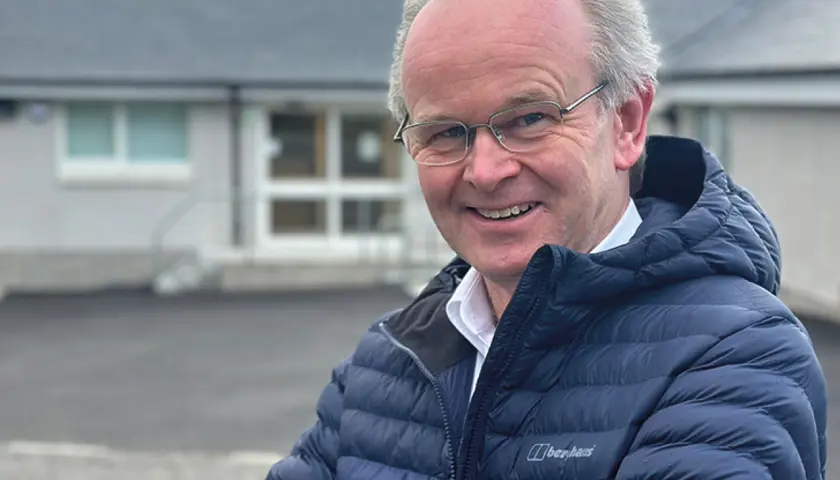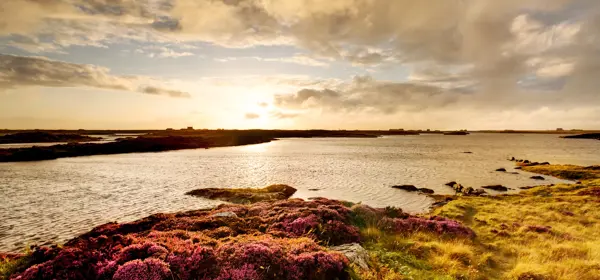Dr Finlay’s world
Dr Finlay’s world
Twenty-five years ago, an influential book about single-handed GP practice captured a way of life which was already beginning to vanish. A new exhibition revisits the challenges – and some of the original doctors
‘I’m not sure what the future of single-handed practice will be. I still maintain that single practice is how medicine ought to be. It is about the art of medicine, having time for your patients and not being bogged down by audit projects, guidelines and all the paperwork that has bedevilled the health service in recent years. For me, this is the ideal way to practise medicine.’
So said Susan Bowie (pictured above) in 1999. As a GP in Hillswick, Shetland, she was one of 46 doctors interviewed about living and working in some of Scotland’s most remote and rural areas. This resulted in the book Single-Handed, which was essentially a snapshot of a way of life which was already beginning to vanish.
Accompanied by black-and-white portrait photographs by artist Rosie Donovan, the interviews, conducted by John Bain, then professor of general practice at the University of Dundee, reveal the challenges and the joys of single-handed practice – including 24-hour responsibility for out-of-hours care, and, in one case at least, the need to perform emergency surgery on a sheep caught in barbed wire just outside the GP’s garden.
Now, to mark its 25th anniversary, Single-Handed has been revisited in an exhibition on display in St Margaret’s in Braemar in Royal Deeside (just along from Balmoral). Called Dr Finlay I Presume?, the exhibition shows photographs, videos, artefacts and interviews which provide an insight into the history of remote and rural general practice, as well as exploring what it means today.
Three of the original participants, including Dr Bowie, who is still practising, were re-interviewed for the new exhibition, as were the GPs who cover the patches of the original 46.
The changes in remote and rural general practice largely mirror the changes in general practice everywhere
Colin Hunter
‘There is no doubt general practice has changed hugely in the last 25 years,’ says Colin Hunter, a former chair of the Royal College of GPs Scotland, who wrote the introduction for the original book. ‘But I think the changes in remote and rural general practice largely mirror the changes in general practice everywhere.
'For example, continuity of care is a hugely important issue for general practice and one of the jewels in its crown, but it has become increasingly difficult right across general practice, [if for example] you’re in a remote area where you are scraping to get locums to provide care, then continuity of care doesn’t really exist.’
'But then if you go into the city of Aberdeen and speak to patients, they’ll say they never see the same GP twice. So that’s an example of where there has been a change that’s been highlighted in remote and rural practice that is actually reflected in the whole of general practice.’
Rota system
One of the interesting things about the exhibition is it showcases the many different ways general practice has flexed and adapted to meet changing circumstances. For example, in Orkney, the health board reorganised care on the outer islands after all the single-handed practices became vacant with no credible applicants for more than two years.
Now there is essentially a rota system, where multiple practitioners are appointed to each island, working in rotation with handover times built in. Typically, a GP will work three weeks on (24/7) and then six weeks off-island. Since 2015, NHS Orkney has recruited every time it has advertised island GP posts.
Out of hours is a big theme in the exhibition. It was not until the arrival of the 2004 GP contract that GPs were able to relinquish 24-hour responsibility for care and the pressure could be relentless. In the original 1999 interviews, many GPs spoke about the challenges of being on call all the time and the boon of having the help of an associate GP (a GP employed by the practice), which was then a relatively recent development.
For example, Janet Fitton, who, as GP in Strathdon was one of the original interviewees, said at the time that she didn’t think she would have considered single-handed practice without the associate scheme.
Her successor Paul Ipson joined the Strathdon Practice as associate GP in 2011, taking over the contract in 2016 (not including out of hours). He still holds the contract today, in contrast to the many practices which are now effectively run by the local health board, which has its pros and cons.
‘It’s difficult to get staff. It can be difficult to get a locum, so you can be a bit isolated on your own. I have responsibility Monday-Friday all year round apart from public holidays, and I’ve got to keep the doors open.’
Nevertheless he enjoys the work. ‘It suits me personally to be a member of a small team where we’re all working for the same cause and we are all dedicated and motivated. You feel you are providing a vital service to a small community and you can provide continuity of care. I think we are quite privileged in that regard.’
Professor Mairi Scott, immediate past director for the centre of medical education at the University of Dundee, and a former Scottish chair of the RCGP, says it’s a good time to revisit the book with the new exhibition.
‘General practice has changed so much, and I think that probably, as older GPs, we were a bit sad about that because we think that the doctor-patient relationship related to continuity [of care] has perhaps been diminished. And yet oddly enough, in the interviews with GPs today one of the themes that comes out is that doctors in those areas, albeit working differently, really value the doctor-patient relationship and community relationships as well. In a way, it was reassuring to see it was still there.’
It's certainly there for Dr Bowie. Having said in the 1999 interview that she enjoyed having time for all her patients and knowing them well, 25 years on, this is still key for her. She is of retirement age, but is finding it difficult to leave the patients for whom she has cared personally for the last 30 years – but she know there are challenges. ‘I’ve had a job advert for 18 months for an associate now and I haven’t had one single applicant. I think rural practices are at their most fragile at the moment. Certainly recruitment is the worst that it’s ever been.
‘What I’ve really enjoyed about general practice has been the longitudinal care of my patients because I think we’re probably the only ones who do it. It just seems to be that everything is running on locums at the moment – I don’t know who the health service is affording it and it’s not brilliant for longitudinal care.’
A story of dedication
Donald Cruickshank retained 24-hour responsibility for his patients for 30 years
Recruitment is a theme that stands out in the exhibition, with many of the GPs interviewed describing the difficulties of persuading young doctors that a career in rural general practice is for them. Certainly the Dr Finlay-style role with 24-hour responsibility for care is nigh-on impossible to recruit to.
The GP practice in Braemar, a short walk from the exhibition, is a case in point. Although the single-handed GP, Donald Cruickshank, wasn’t part of the original book, he is interviewed for the current exhibition, and his own experience exemplifies how much general practice has changed.
Having joined the practice in 1994, he decided to keep responsibility for out-of-hours care even after the introduction of the 2004 contract, with the help of willing associates. Last year, however, the associate was no longer prepared to provide out-of-hours cover (after 10 years) and, despite the best efforts of Dr Cruickshank and the community, it wasn’t possible to recruit.
The practice is now the responsibility of the health board and Dr Cruickshank is helping to manage the transition. ‘I’m glad I came here 30 years ago and I wouldn’t have missed it for the world,’ he is quoted as saying in the exhibition. 'It hasn’t been easy. There are times when it’s been quite challenging. But it’s been a whale of a time.’
Chris Provan, Royal College of GPs of Scotland chair and a GP in Aberdeen, says the exhibition brings home the dedication of that generation of single-handed general practitioners and the different models used in general practice to serve our different communities.
‘Donald Cruickshank’s story is very remarkable – many years of on-call, and it wasn’t until he was well-established that he even got an assistant, so he knows his patients very well indeed. When he was applying for his job there were 30 or 40 applicants.
'Now we’re very lucky to get one or two applicants for a partnership in general and rural ones can be even more difficult, even though Braemar is a beautiful place to live.
'I don’t want to get too political, but we do have to think about flexibility in contracts so that rural areas can be taken account of going forward and think about how we can attract people who have perhaps different demographics and expectations so that we can keep that going. But it’s also important to keep that continuity and personalised care going forward.’


